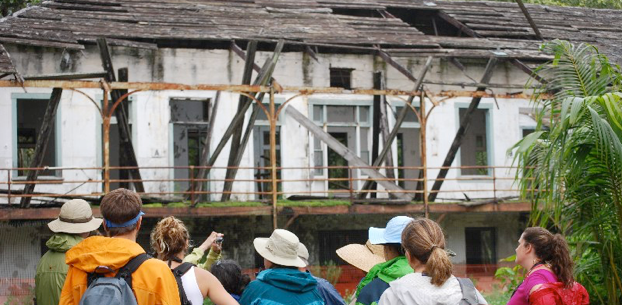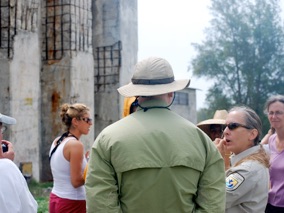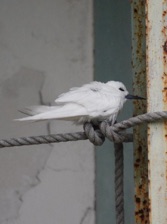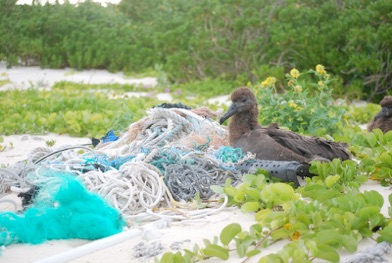June 15, 2009

A home isn’t a home until you know its history; whether that history be happy, sad, trivial, or monumental. We headed out on our bikes for a historical island tour of the island, led by Tracy Ammerman (U.S. Fish and Wildlife Service). In 1903, the Commercial Pacific Cable Company (building shown above) became the first guardians of the island after President Roosevelt placed the US Navy in charge to prevent poachers from devastating the wildlife for eggs and feathers. (The eggs were harvested for their albumen, used in photography).

PanAm Airlines brought the first visitors to Midway in 1935 to enjoy 4-star accommodations (built by PanAm). The historical event Midway is most noted for is the Battle of Midway which took place June 4 – 6, 1942. Midway’s first encounter with war actually occurred on December 7, 1941 (Pearl Harbor Day) when Japanese ships opened fire on the island about 12 hours after attacking Pearl Harbor. The Command Post (shown in the photo on the rigth) and other Midway facilities, were hit. Six months later, the Battle of Midway became a critical battle in the Pacific and provided a turning point for the war. At one time, 5000 residents called Midway their home.

Most of the buildings constructed in 1903 lie in ruin today. Many of the buildings constructed during the military occupation in 1941 are still standing and have been renovated for use by the current residents (70 people) of Midway. The wildlife of Midway continues to utilize the abandoned buildings and grounds for nesting areas (see photo at right). It amazes me to observe how many of the birds have adapted to the anthropogenic impacts on the island. Some of them have even managed to find a use for marine debris that has washed ashore (see photo below).

REVIEW TOPIC: ANTHROPOGENIC ADAPTATIONS
Increases in human population continue to create conflicts with wildlife for living space. Observe areas near your home, including schools, shopping malls, and other man-made structures, to determine the anthropogenic effects noticeable to wildlife. (“Anthropogenic” refers to human or man-made impacts.) Draw, photograph, or describe examples that you observe. How do you think these animal adaptations will affect the future of the species you observed?

